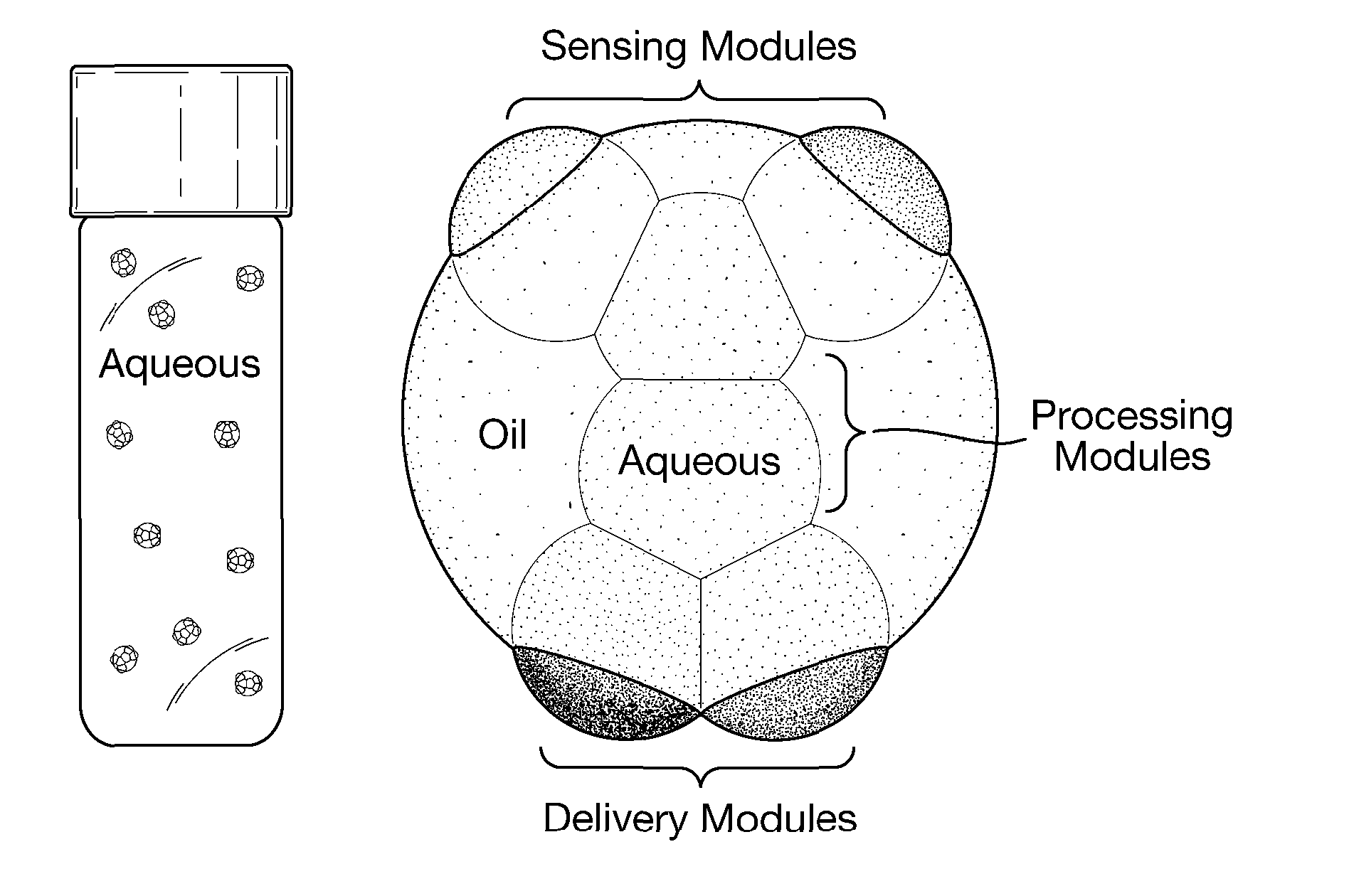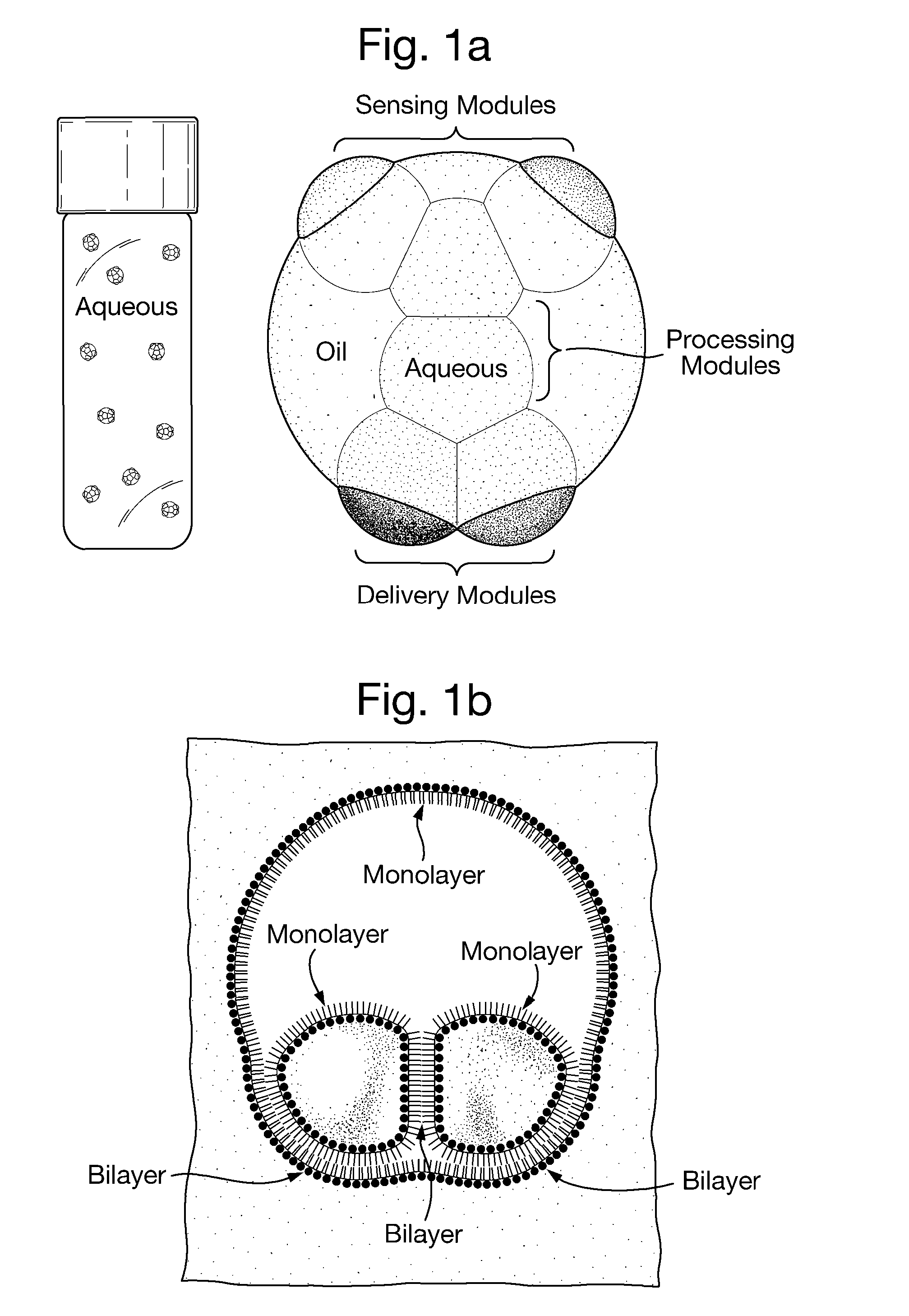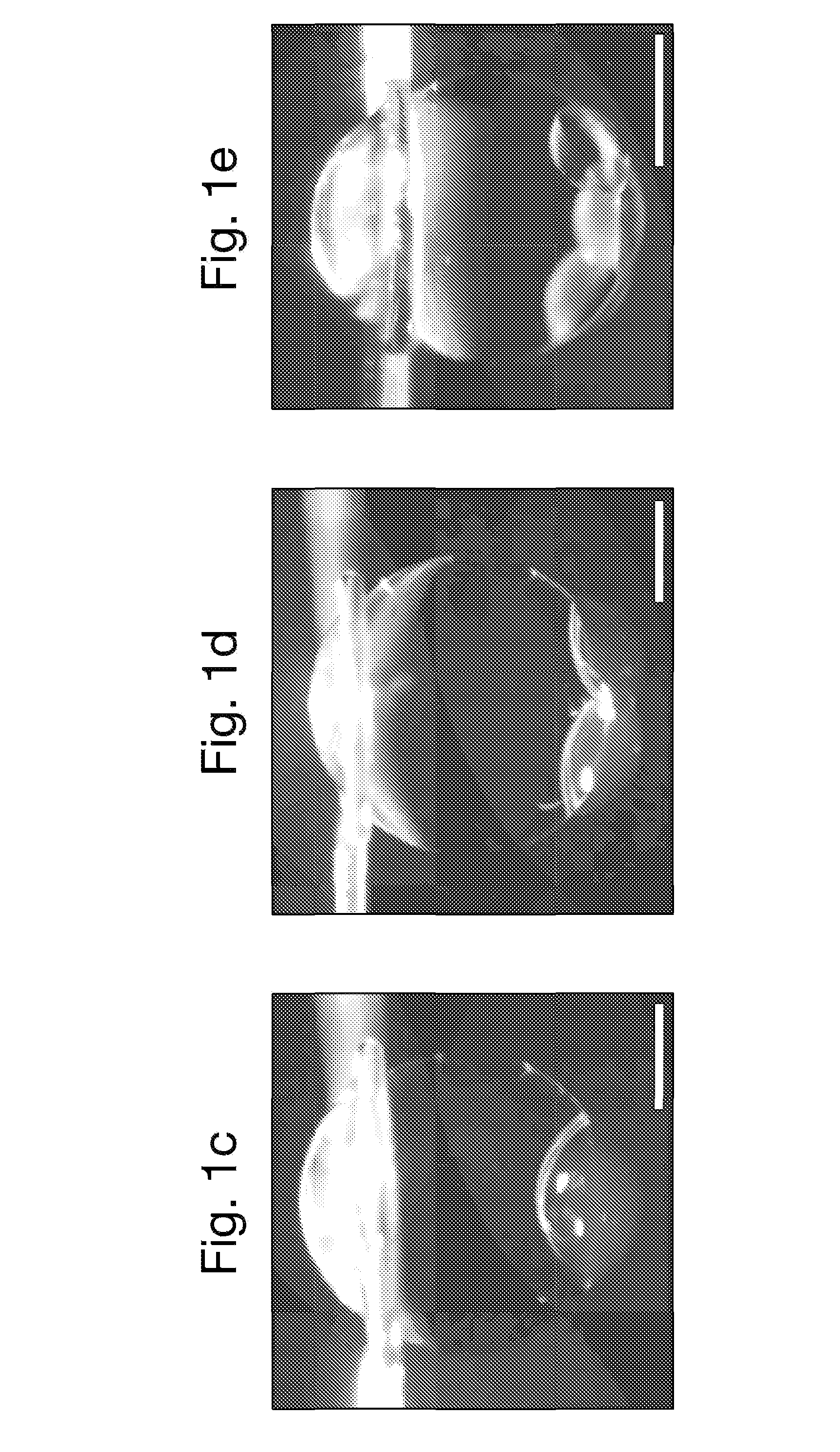Multisomes: Encapsulated Droplet Networks
a droplet network and multisome technology, applied in the field of droplet encapsulation, to achieve the effect of combinatorial delivery of drugs
- Summary
- Abstract
- Description
- Claims
- Application Information
AI Technical Summary
Benefits of technology
Problems solved by technology
Method used
Image
Examples
example 1
Encapsulation
[0381]Multisomes were made in three steps. First, droplets of buffer of diameter ˜300 μm were pipetted into oil containing dissolved lipids; typically the oil was a 9:1 (vol / vol) mixture of silicone oil and hexadecane, and the lipid was 1,2-diphytanoyl-sn-glycero-3-phosphocholine (DPhPC). Second, a droplet of the same oil solution of diameter ˜800 μm was placed in a bulk buffer. Finally, after ˜5 min a number of the aqueous droplets were transferred with a pipette into the oil droplet. Within ˜1 min of encapsulation, the inner droplets adhered to each other, and to the surface of the oil droplet (FIG. 1c-e). These structures were stable for at least 24 h. For simplicity, the term “multisome” is used herein irrespective of the number of encapsulated droplets.
[0382]It was desirable to wait several minutes (the incubation time) before encapsulation. If transferred too soon, the aqueous droplets tended to fuse with each other and with the external aqueous phase. The incubat...
example 2
[0391]By analogy with systems of DIBs in bulk oil (Holden, M. A. et al. T. Am. Chem. Soc. 129, 8650-8655 (2007)), the incorporation of membrane pumps, channels and pores into the bilayers of a multisome would allow precise control over the exchange of material, and electrical communication, between the various inner droplets and the external solution. To determine whether the external bilayers of multisomes can support the insertion of membrane proteins, electrical measurements were performed across the external bilayer of a multisome with a single inner droplet. To achieve this, a glass-insulated Ag / AgCl electrode was made that was electrically exposed only at its tip (see Methods, below). Immediately after an aqueous droplet was transferred into the oil droplet, the electrode tip was inserted into the inner droplet. Through micromanipulation of the electrode, the inner droplet was then brought to the surface of the oil droplet to allow bilayer formation (FIG...
example 3
Communication by Diffusion
[0399]Having established that αHL pores can insert into multisomal external bilayers, we explored whether the inner droplets of a multisome could use these pores to communicate passively with each other and with the external aqueous solution; that is, without driving the ion flux with an externally applied voltage.
[0400]First we tested whether an encapsulated droplet could communicate with the external aqueous solution. A multisome was made with a single inner droplet containing αHL pores and fluo-4 (a Ca2+-sensitive dye) conjugated to 10,000 MW dextran, and monitored by fluorescence microscopy. The addition of Ca2+ to the external solution caused the initially dark inner droplet to become fluorescent over ˜1.5 h (FIG. 4a), whereas a multisome without αHL showed no fluorescence increase (n=6). We concluded that the fluorescence increase in the multisome containing al-IL was caused by the diffusion of Ca2+ ions from the external aqueous solution into the inn...
PUM
| Property | Measurement | Unit |
|---|---|---|
| diameter | aaaaa | aaaaa |
| volume | aaaaa | aaaaa |
| volume | aaaaa | aaaaa |
Abstract
Description
Claims
Application Information
 Login to View More
Login to View More - R&D
- Intellectual Property
- Life Sciences
- Materials
- Tech Scout
- Unparalleled Data Quality
- Higher Quality Content
- 60% Fewer Hallucinations
Browse by: Latest US Patents, China's latest patents, Technical Efficacy Thesaurus, Application Domain, Technology Topic, Popular Technical Reports.
© 2025 PatSnap. All rights reserved.Legal|Privacy policy|Modern Slavery Act Transparency Statement|Sitemap|About US| Contact US: help@patsnap.com



